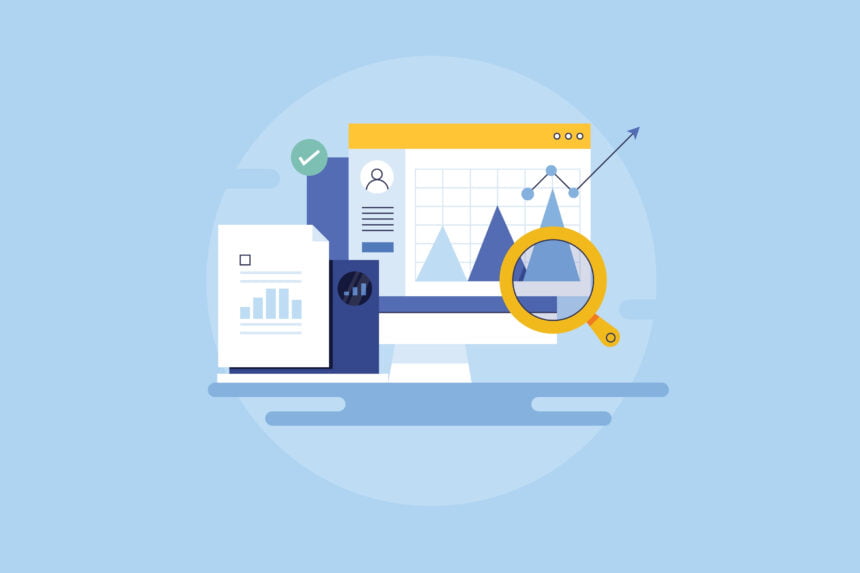Thanks to the rapid digital transformation, the software industry is one of the fastest-growing industries globally. Data analytics helps to determine the success of the business. Although the COVID-19 pandemic harmed several businesses, the software industry didn’t suffer much of a collapse.
Digital technology has helped almost every industry. The data-driven trends are helping IT businesses to adopt the changes and meet customer expectations. Most of these businesses rely on data to provide the best customer experience.
The software industry relies on data-driven technology to solve various complex problems. According to the Gartner report, the global IT spending would be around $3.8 trillion, reflecting how much businesses invest in software. Therefore, data-driven analytics eventually helps to bring a change.
Impact Of Data-Driven Analytics
Several companies in today’s time claim to be a part of the data-driven world. However, these are just claims, and therefore, it is necessary to determine how true it is.
Becoming data-driven is all about the shift. Until and unless you change your business, growth isn’t possible. According to a McKinsey Global Institute report, various companies are using data analytics which is helping them drive valuable results, and they are getting better customer acquisition and profits.
How Is Data-Driven Analytics Being Helpful?
There are numerous ways to transform the business environment through data-driven analytics entirely. Some of these include:
1. Collaboration
In IT teams, the employees must collaborate and work together. Unless there is a data-driven approach, employees won’t collaborate and work.
The coming in of data-driven analytics has helped eliminate barriers among the group. This type of collaboration has eventually paved the way for better performance and innovation.
Fast results can bring significant engagement with the right approach. With data-driven analytics, businesses can calculate their roles and responsibilities, which helps to bring teamwork across departments. However, every team member must collaborate as per the approach.
2. The Dominance of Native Apps
People are switching from the heavy use of laptops or computers to mobile phones. Therefore, mobile apps will play an essential role in promoting the success of your business.
It is 2022, and software developers are observing the dominance of native apps because of the data-driven approach. These eventually contribute to providing an unparalleled customer experience.
With data technology and machine learning, every customer gets a unique approach. The native apps are supported across different machines, making it easier for the developers to explore if the particular device is functional. This also paved the way for bringing about security and usability.
3. More Businesses Are Dependent on Cloud Services
One of the best ways through which data-driven analytics has revolutionized the software industry is using cloud services. As per the increasing demands of business availability, most need cloud services for data recovery and scalability.
It is anticipated that most businesses will be dependent on PaaS, IaaS, and SaaS platforms for team management and streamlining business operations. Furthermore, the rise of multi-cloud initiatives can also be expected this year.
The cloud enterprise companies are shifting from multiple vendors to single vendors, which will eventually help minimize the different risks related to the business. The data-driven approach brings about various tools that can help prevent complex problems for single users.
4. Self-Service Analytics Tools
Self-service analytics tools have become extremely common. Thanks to data-driven technology, problems can be easily solved with information flow.
Businesses should, however, get the necessary tools that will help them solve problems quickly. At the same time, it is required to implement a bottleneck that will help drive better engagement in the business.
The data-driven analytics is also helping to increase employee productivity, and it helps reduce the need for employees to do the work manually. As a result, they can save time and eventually implement the same in other sectors.
5. The Right Use of Tools To Deal With Data
Business teams significantly rely upon data for self-service tools and more. Businesses will need to opt for data preparation and analytics tasks, ranging from finance to marketing. Therefore, businesses use tools that will ease the process to get the right data.
These tools have advanced machine learning technology and help monitor the entire cycle. These are smart tools that help ease the business’s data generation function. The smart tools have certain features, such as:
- The automation model will help with model management and building. It uses machine learning and natural language processing technology to improve data matching.
- The reusability feature will help in data management and analytics, further maintaining the data pipeline.
- With the help of explainability, businesses can easily understand what the output would be.
Final Words
The data-driven approach has concretely brought a considerable change in the software industry concisely. Businesses are moving from manual to data-dependent approaches, and a unified platform can therefore help to maximize profits.

